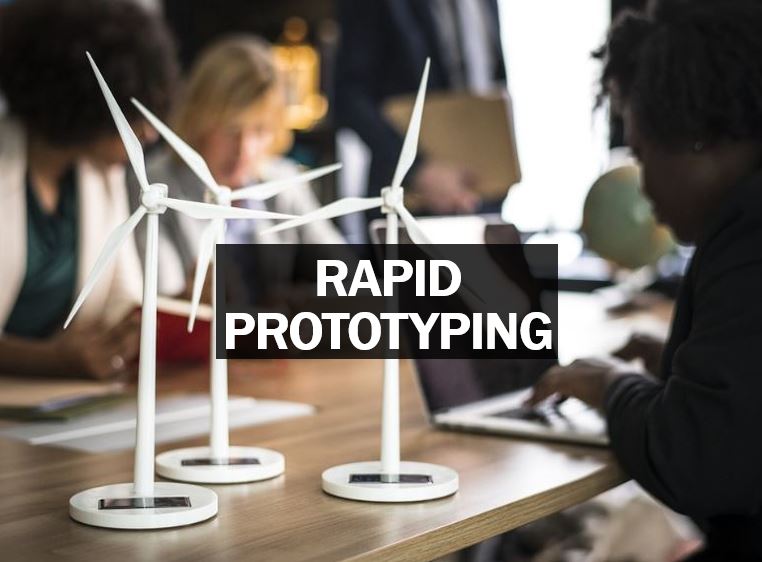
In recent years, rapid prototyping has been instrumental in changing how manufacturers improve production and product design. Essentially, rapid prototyping refers to a sequence of production techniques streamlined to make a 3D model and promptly fabricate a scalable and functional model of a physical part or assembly using CAD data as well as an additive manufacturing technique. The accompanying purposes are reached through rapid prototyping:
- Faster and effective product development
- Early phase concept/design approval of fit/form/function
- Final phase product verification regarding business and technical objectives
Rapid prototyping involves using 3D modeling software to upgrade the existing designs or produce the new ones in less time than manual drawings. Hence, there are its various applications in different industries like injection molding, automotive, aviation, electronics, etc. Especially for the injection molding industry, rapid prototyping is a gateway to enter an unprecedented market where manufacturers can grasp the emerging opportunities showing a physical model of their product.
When is Rapid Prototyping is Usually Used in Injection Molding?
Certain conditions follow the use of rapid prototyping, and most of the times, the following conditions necessitate the inclusion of rapid prototyping in injection molding:
-
Low-Volume Production
Low-volume manufacturing can usually be costly if manufactured following the conventional approach of production in injection molding. The traditional method in injection molding involves preparing the mold to start the production, but it might not be economical for such a small-scale production. Therefore, rapid prototyping helps manufacturers avoid the costly manufacturing of mold using CNC machines. Instead, different rapid prototyping techniques can be used, like fused deposition modeling (FDM), stereolithography, and traditional 3D printers. Adopting any suitable approach that falls in the domain of rapid prototyping, manufacturers can significantly reduce their costs, allocation of human resources, and lead time. Meanwhile, the quality of the final product will also be better than the product obtained using other methods.
-
Micro-Injection Molding
By the way, micro-injection molding and low-volume production are concomitant because low-volume production is always suggested for micro-injection molding. However, micro-injection molding still massively supports the idea of rapid prototyping. The reason is that in micro-injection molding, high precision and accuracy are required for producing small parts, which is hard to accomplish with a traditional injection molding process. In 3D rapid prototyping, resins are manipulated to form an unconventional mold, which is brought into operation using rapid prototyping approaches since they are highly accurate and precise. Furthermore, there are specified materials used in the rapid prototyping, including ABS, Nylon, Tool steel, PEEK, and Titanium.
Advantages of Rapid Prototyping Over Standard Prototyping
The availability of a physical 3D dimensional form of product can help manufacturers perpetuate further development like shorter tooling time when the process gets started for high-volume production. Subsequently, other than having a planned and prepared product in hand, here are the benefits associated with rapid prototyping:
-
Tooling Development
After accomplishing the design portion, manufacturers might land directly for the high-volume production. However, using rapid injection molding before starting the tool production at a mass level can significantly cut down the tooling expenses. Along with reducing the tooling time and costs, rapid prototyping also assists in measuring the minor loopholes and improving part tooling.
-
Inexpensive and Fast
Other prototyping techniques can be expensive or slow. Still, rapid prototyping is about modest materials, quick turnaround, and low-volume production, allowing product testing with no financial risk and less wastage of time. In addition, it does not need much time, labor, or money.
-
Encouraging Tweaks or Changes
Rapid prototyping encourages to creation and test of as many product versions as required. It urges to make minor changes to optimize the product in whatever way it can be done. These small changes will also help create an ideal outcome.
-
Investigation for Secondary Processes
Secondary processes like post tapping, ultrasonic welding, and drilling may be mandatory with some tools and products. Rapid prototyping brings an option of checking the validation of product implementing the post-development or secondary processes.
-
Full-Scale Model for Endorsement
Contingent upon a business model, with rapid prototyping, the physical prototype can be sent for the customer’s and management’s endorsement. These models can help identify its practicality, adequacy, and market reception before making a full-scale manufacturing order. The feedback and input from various sources can tweak the final design to acquire the advantage on the lookout.
Conclusion
Rapid prototyping is not solely associated with injection molding, but it also supports a vast list of industries, such as automotive, aerospace, healthcare, and product development. Rapid prototyping is perceived as a pre-emptive tool to eliminate possible causes of failure in product or tool production. Moreover, it is equally valuable to analyze the quality, functionalities, and operational capacity of a product on a reality basis before its mass-level production.
Additionally, most industries requiring accuracy and precisely manufactured tools and products are fully open to work with rapid prototyping, which is the very reason for the emerging trend of using rapid prototyping. According to the global rapid prototyping market, 12.91% growth is expected of this sector in the coming years compared with numbers in 2018. At the same time, the global market size is likely to touch the figure of $6513.9 million.
You may be interested in: Rapid Prototyping And Its Advantages Explained

